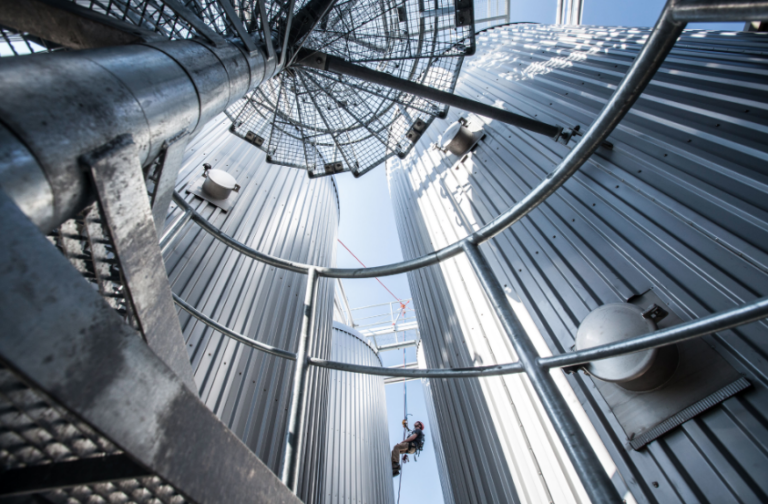Aside from being compatible with other components of the system, all equipment should be of sufficient strength to offer appropriate performance under whatever load might be applied, plus offer a sufficient factor of safety above and beyond that.
While single body weight loads (one person) are often practices and aspect of litter work (as an example) will greatly affect the rigging need for evacuation. Add to this, rigging angles and friction-things can quickly move up the intensity scale. NFPA 250 (formerly 1983) classifies equipment into three categories:
- NFPA 2500 G (General) – G rated gear simply means that moderately trained technicians should not overload the systems being deployed.
- NFPA 2500 T (Technical) – T rated is an inroad for a more highly trained technician who think in terms of limits and can analyze systems that are sufficient to do the job with small and lighter gear and still not over stress the system.
- NFPA 2500 E (Escape) – E rated equipment has lower parameters due to the emergency with which the equipment will be used. Single person loads and a limited capacity of use.
The NFPA has a long and complicated history when it comes to the classification of manufacturers. T or Technical was once P for Personal and then to L for Light Use and now T – Technical Use.
While the G, T and E classifications are a great, they are still a marinated and boiled down minimum performance criteria. Rescuers should always be aware of the actual strength and other ratings marked on the product they are using. Meaning… Load Ratios.
The proper use of safety factors is to account for the many uncertainties inherent in any real-world application, and not to try to compensate for a lack of knowledge about the equipment.
It is important to know the actual strength ratings of equipment when determining load ratios for safety factors. The simple E, T, and G ratings are not as useful when rescuers need to think in terms of forces related to the strength of different points in the system.
The NFPA 2500 standard places great emphasis on users’ ability to determine system loads. This is where having accurate strength ratings for your equipment comes in handy. Knowing the actual strength of your equipment allows you to calculate much more accurate load ratios, and ultimately use smaller safety factors.
While not every situation will be identical, understanding how system loads are calculated will give you a big leg up in ensuring the safety of your equipment.
The design load for a European-style rescue system is significantly lower than the 300 lbs (136 kg) test weight assumed by NFPA. European standard assume overall loads are lighter, evacuations are shorter, potential forces are lower, and environments are more controlled. This creates quite the challenge for manufacturing products for standards that don’t line up very well.
 The design load of a product is the load for which the product is designed. The minimum breaking strength (MBS) is the load at which the product will break. The system safety factor (SSF) is the ratio of the design load to the minimum breaking strength.
The design load of a product is the load for which the product is designed. The minimum breaking strength (MBS) is the load at which the product will break. The system safety factor (SSF) is the ratio of the design load to the minimum breaking strength.
The concept of safety factors and such has always been a staple of confusion.. not just for technicians, but with those who are trying to determine the standards to begin with. We’ll stay clear of the historical barnacles of yesteryear for this reason, however it all comes down this… SSF. System Safety Factor.
The system safety factor (SSF) is a measure of the strength of a system. It is calculated by dividing the strength of the system by the anticipated force or load at the point where the system is weakest. The SSF can be used to determine whether a system can safely handle a given load. If the SSF is too low, the system may not be able to safely handle the load and could fail.
System safety factors (SSFs) are important tools for assessing the safety of engineering systems. They can be used to compare the strength of a system to the loads that it will experience during operation. SSFs can be static or dynamic. A static SSF is analyzed as the ratio of system strength to normal static loads, while a dynamic SSF is analyzed as the ratio of system strength to worst-case dynamic loads.
System safety factors (SSFs) are important tools for assessing the safety of engineering systems. They can be used to compare the strength of a system to the loads that it will experience during operation. SSFs can be static or dynamic. A static SSF is analyzed as the ratio of system strength to normal static loads, while a dynamic SSF is analyzed as the ratio of system strength to worst-case dynamic loads.
Knowledge will always win:
- Minimum breaking strength (MBS) ratings
- Safe working loads (SWLs) or Working Load Limits (WLLs)
What about the 15:1, 10:1, 7:1, 5:1, 3:1? This will be looked at in other courses with respect to systems and real world expectations.
Where can you get more information on this? How about NFPA 2500.
NFPA 2500 Standard for Operations and Training for Technical Search and Rescue Incidents and Life Safety Rope and Equipment for Emergency Services is really a combo umbrella pack for three existing standards:
- NFPA 1983 Standard on Life Safety Rope and Equipment for Emergency Services
- NFPA 1670 Stand on Operations and Training for Technical Search and Rescue
- NFPA 1858 Standard on Selection, Care and Maintenance of Life Safety Rope and Equipment for Emergency Services
It would be well worth the investment to purchase this document.
Peace on your Days
Lance









